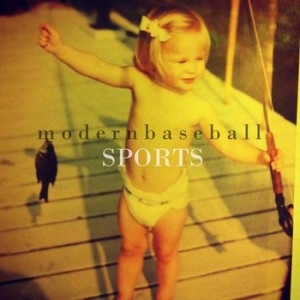Emo Music
Test your knowledge
What is "Emo Music"?
The Oxford Dictionary of English describes it as "a style of rock music that developed from punk, but has more complicated musical arrangements and deals with more emotional subjects", and that is technically right, although this definition doesn't cover everything this noun means. Everyone (me included) understands this word in a different way, which usually depends on what wave of this genre you grew up with.
A Quick Summary Of The History Of Emo
First Wave
The first wave of Emo was born in the 80's in Washington D.C, after the
hardcore punk band Minor Threat broke up and their vocalist, Ian MacKaye
started a new one called Embrace. This band had more complex melodies
and arrangements, and the lyrics focused on feelings rather than on
society, like other punk bands did.
In 1985, the term Emo-Core (Emotional-Hardcore) was born, and although
not everyone liked it (Ian MacKaye once called it "the stupidest f*****g
thing I’ve ever heard in my entire life"), it spread across the USA and
soon became just Emo. Bands like Embrace, Rites of Spring and Moss Icon
were the most representative of this wave.
Second Wave
By the 90's, Emo had grown a lot, but instead of going towards the
mainstream (like bands like Nirvana, that had the same hardcore origin
as Emo but didn't follow the steps of other emo acts), it became an
alternative and DIY genre.
While in the Northeast, bands specialised in heavy melodies and lots of
screaming, the Midwest developed a whole genre of its own.
The first thing that comes to mind when trying to describe the new style
of this wave is its twinkly guitars and math rock sound, first
introduced by Mike Kinsella, who was a member of two of the most popular
emo bands of that period. These bands were Cap'n Jazz (probably the most
influential for future fourth wave emo acts) and American Football,
whose self-titled album of 1999 was ranked 6th in the Rolling Stone list
of the 40 Greatest Emo Albums of All Time (a little snippet of the album).
This new sound consisting of odd time signatures and complex rhythm
structures would then be heavily used in the fourth wave, but let's not
get ahead of ourselves.
 By received directly from the record label that holds the copyright to
the image with explicit permission to use it.
Link
By received directly from the record label that holds the copyright to
the image with explicit permission to use it.
Link
Third Wave
So the hometown of the first wave was Washington D.C., then we moved to
the Midwest for the second wave, and for the third, we return to the
Northeast, more specifically to the Tri-State area (New York, New Jersey
and Connecticut).
The twinkly guitars and complex melodies disappeared, and pop-punk
reached the mainstream. Bands like Saves the Day and Taking Back Sunday
became the representatives of the new, simple and catchy sound of the
2000's and made it to MTV, that served as a conductor to reach the new
generations of teens all over the world.
In this moment, the genre separated into two: a "pure" pop-punk, lead by
bands like New Found Glory; and a darker, maybe angstier genre that
would still be known as Emo. While pop-punk had a more laid back, skater
boy aesthetic and talked about love, friends and heartbreak, the second
relied heavily on dark clothes and eyeliner, and tackled topics like
suicide, mental health, loneliness, unjustice and death, taking some of
the first steps towards normalizing this issues. Some of the most
popular bands inside this genre are "the Holy Trinity of Emo": Fall Out
Boy, My Chemical Romance and Panic! at the Disco, Paramore and Sleeping
with Sirens among others.
Fourth Wave
The Emo Revival
So, eyeliners are no longer in, My Chemical Romance breaks up, both
Paramore and Fall Out Boy take a really long break and
Panic! at the Disco is poppier than ever. What's next for emo?
It's 2012 and Modern Baseball releases their debut album "Sports". They
may not know it but they are about to become the architects of the
fourth wave of emo. It would be unjust to just pinpoint a single band as
the creator of a whole era, and I am not trying to do so. Lots of other
bands before them already made a change in the emo scene, like Algernon
Cadwallaver and Tigers Jaw, who practically created it; empire! empire!
(I was a lonely estate); and The Hotelier. However, Modern Baseball
served as an influence for a great majority of the bands that came after
them with their DIY sound and creative lyrics.
Here are some of the lyrics to one of their most famous songs, "Tears over beers":

That girl who's next to me,
she don't know her worth in this town
Because her face starts to shine
when that meat head behind me
Is grinning as he's checking her out
OH COME ON
I said, "All I can hope for is for you to get better
Because all I can take is no more
So I'll hide where I can, away from you and your friends
Leaking tears over beers once again."
The cool thing about the Emo Revival is that there isn't just one word to describe it. Weather you want a math rock-y sound like Tiny Moving Parts', dramatic lyrics over a folk punk sounding guitar like The Front Bottoms does, or a bit of both like Panucci's Pizza, this genre has you covered.
So, in conclusion, emo is a great and broad genre that doesn't always
fit in the stereotypes set by society.
GO BE EMO! :)